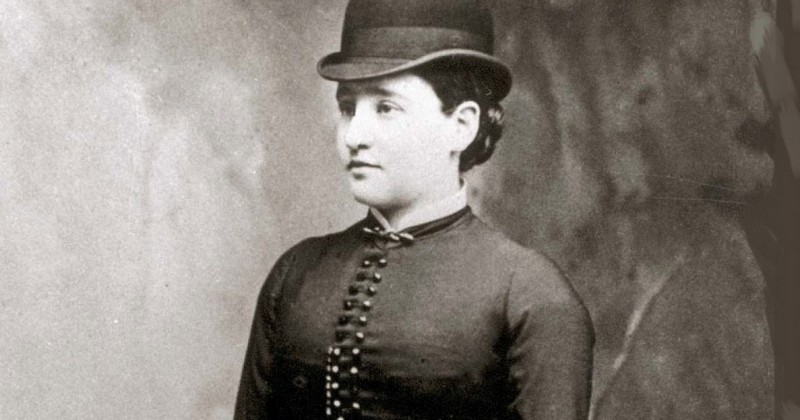The ’case of Anna O.’ and Sigmund Freud

A famous patient who is studied in all Psychology faculties.
The case of Anna O.described by Sigmund Freud and Josef Breuer in "Studies on Hysteria", was described by Freud himself as the trigger for the emergence of psychoanalysis. The work of the father of this movement, and thus in a certain sense also of psychotherapy in general, cannot be explained without taking into account the treatment of Bertha von Pappenheim.
In this article, we will analyze the truths and myths surrounding the famous case of Anna O. Understanding the keys to the intervention that made Freud famous, even without having participated in it, can be useful to reconceptualize certain misconceptions about psychoanalysis that today continue to hinder the progress of clinical psychology.
The celebrated case of Anna O.
Josef Breuer was a physician and physiologist who lived between 1842 and 1925.. In 1880 Breuer accepted the case of Bertha von Pappenheim, a young woman of remarkable intelligence who had been diagnosed with hysteria. Her main symptoms consisted of paralysis, blindness, deafness and dumbness of a possibly psychogenic character (i.e., generated by autosuggestion).
Other relevant signs of the case included the presence of aphasia-like language disturbances, dissociative amnesia, food refusal and emotional instability. Von Pappenheim also had facial Pain of neurological origin that was treated with morphine, which caused him to develop an addiction to this substance.
Breuer's records also describe von Pappenheim as a case with characteristics similar to what we know today by the label "dissociative identity disorder." According to the physician, the patient had a sad and fearful main personality, but also one with childish and impulsive traits; both were exacerbated by treatment.both of which were exacerbated by the treatment.
The birth of the cathartic method
Von Pappenheim and Breuer noticed that the symptoms were temporarily relieved if the patient talked about them, about her dreams and hallucinations, and succeeded in attributing a cause to them, especially while under hypnosis. Since von Pappenheim was satisfied with the procedure, Breuer decided to focus on it.
von Pappenheim herself gave this method the names "chimney-cleaning" and "speech cure." It was the latter term that achieved the greatest popularity, together with the one given to it by Breuer and Freud: "cathartic method", which basically consists of attributing certain causes to the symptoms in a state of hypnosis in order to eliminate them.
von Pappenheim's symptoms did not subside with Breuer's treatment (he and Freud lied about this when documenting the case in "Studies on Hysteria"), but she was eventually institutionalized; however, she eventually recovered and became a prominent figure in German society and an opponent of psychoanalysis, she eventually recovered and became a leading figure in German society and an opponent of psychoanalysis..
Breuer, Freud and "Studies on Hysteria".
For much of his life Breuer was professor of physiology at the University of Vienna. In all probability his most remembered student today was Sigmund Freud, considered the father of psychoanalysis. It was precisely the case of Anna O. that catapulted Freud to fame.despite the fact that he never met Bertha von Pappenheim.
The case inspired Freud when he heard Breuer's account of it. Despite his initial reluctance he managed to convince his teacher to allow him to include him in a book on hysteria and to collaborate in its writing. In addition to Anna O. -pseudonym created for this work-, "Studies on Hysteria" included four other similar cases.
However, Freud was convinced that the symptoms had a psychosexual origin that could be traced back to traumatic childhood experiences, while Breuer defended that hysteria could be due to organic causes. Both positions coexist in "Studies on Hysteria", although Freud's was the one that was consolidated in the field of psychoanalysis.
What really happened? Invention of psychoanalysis
"Studies on Hysteria", and in particular the case of Anna O., were the seed that allowed the psychoanalytic approach to germinate.. Of course, Freud's role as a promoter of the cathartic method - in which he had much more confidence than Breuer - both through his written work and through the support of high society, was invaluable in this regard.
Breuer disagreed with the attitude adopted by Freud, who systematically aggrandized the real events of Anna O.'s case to the point of popularizing the legend and getting most people to ignore Breuer's version. In all probability Freud's aim was to consolidate his position as a clinician.
However, there were many who sought to disprove Freud's account, including some of his disciples, such as Carl Gustav Jung, who would play a key role in the distancing of many practitioners of psychoanalysis from Freud's ideas.
Years after the treatment of Anna O. Several experts have analyzed the available evidence in order to evaluate the causes of its alterations. Many agree that the origin appears to be organic rather than psychogenic, and the symptoms may be explained by disorders such as encephalitis, temporal lobe epilepsy or tuberculous meningitis.
(Updated at Apr 13 / 2024)